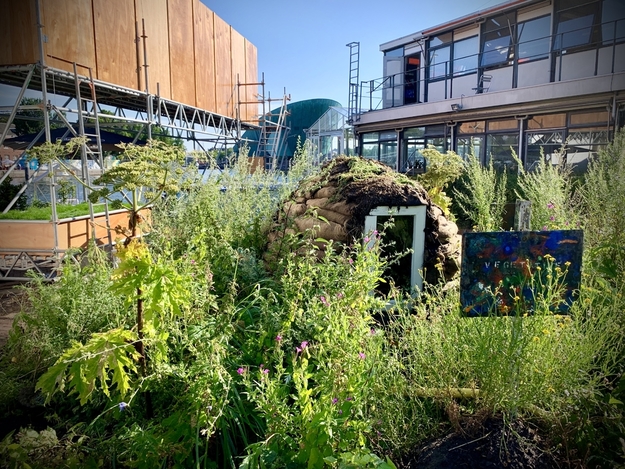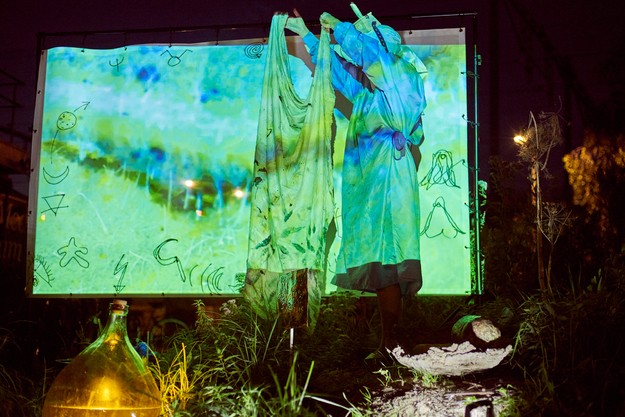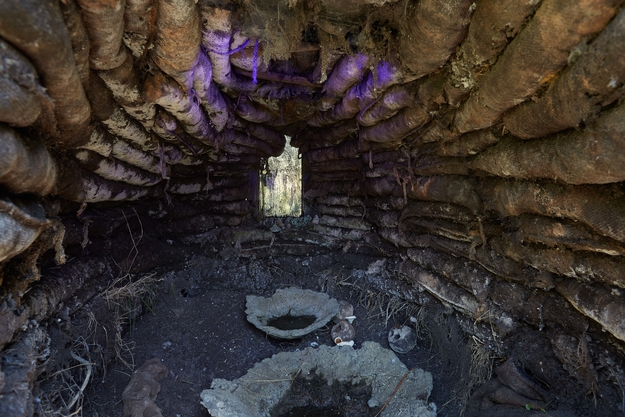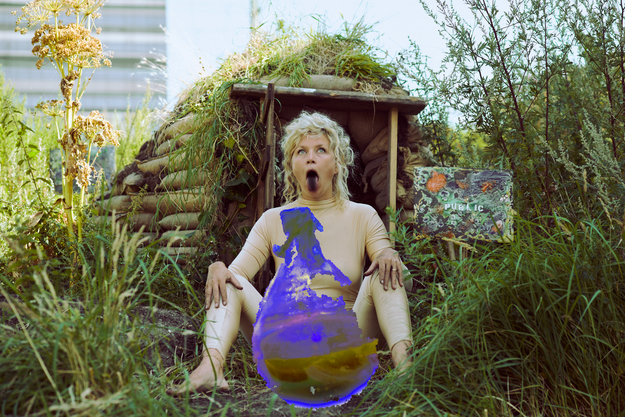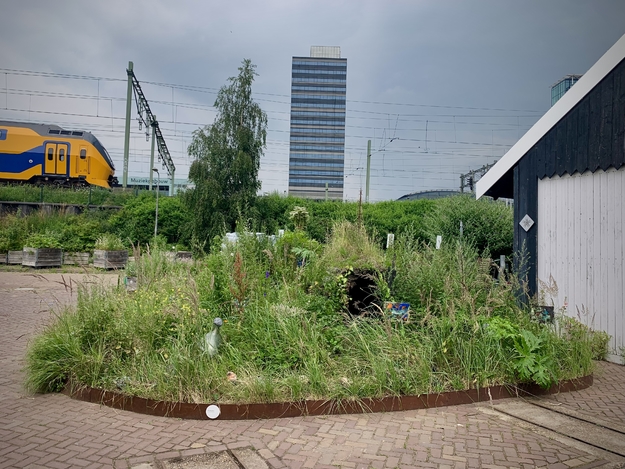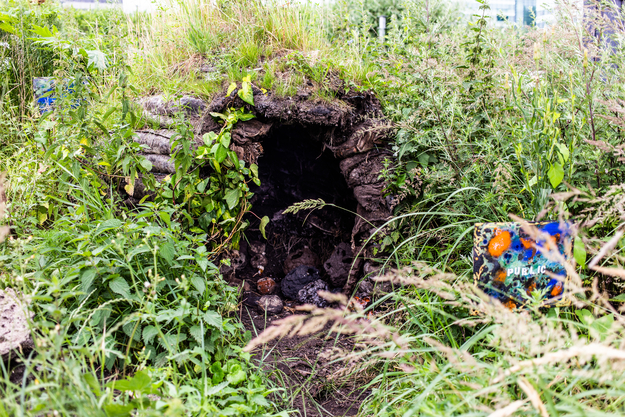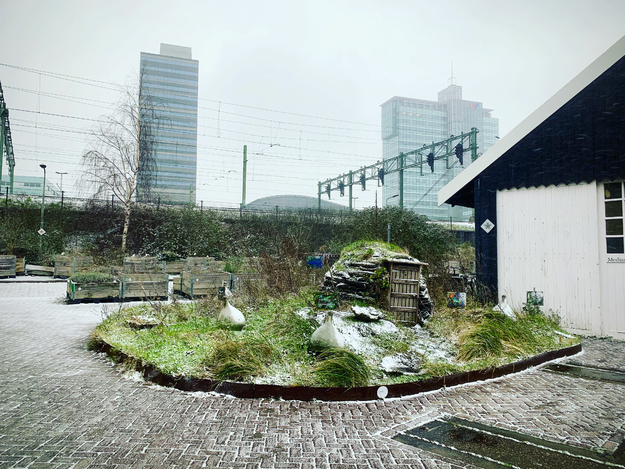Tumulus is a cyclical weed-woad restoration project in several parts:
- Vegetative State
June - mid-July '19 - Growth Imperative
mid-July - Oct, with a dedication ceremony on September 13, 2019 - Dormant Lot
Nov '19 - Feb '20 - Healing Property
Mar - Aug '20 - Blue Monday
Sept - Dec '20
with a celebration of the autumnal equinox, September 21st, 2020 - Hibernating Winter Garden
Dec '20 - Mar '21 - Spring
- Summer
- Autumn
- Romantic Ruin
Mediamatic Biotoop, Dijkspark 6, Amsterdam
The installation is located at the front of the Sluisdeurenloods.
